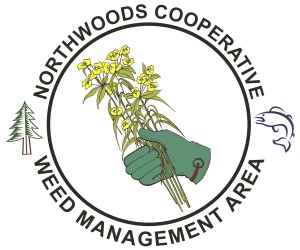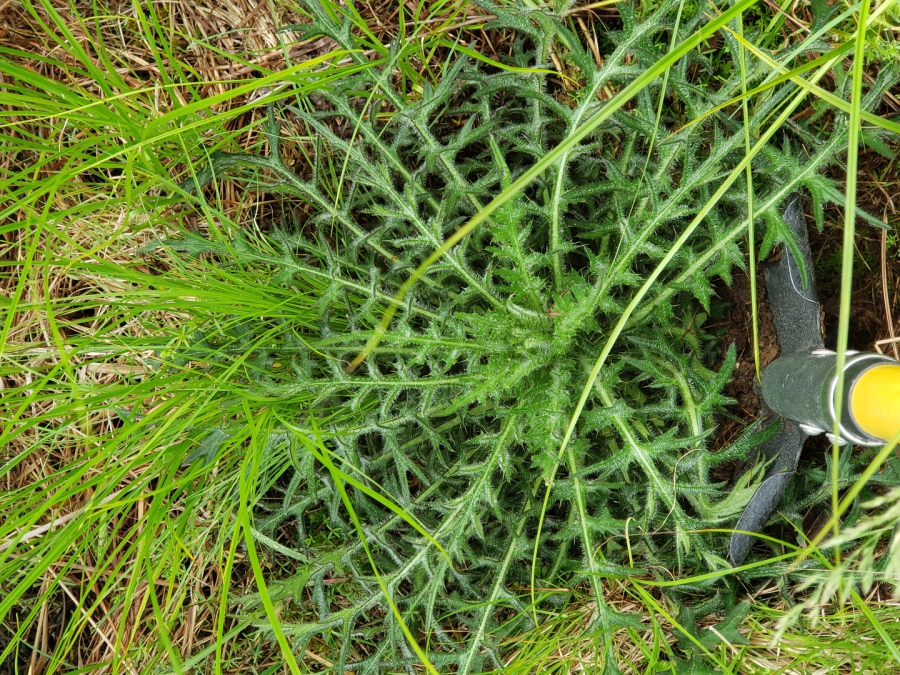European Marsh Thistle (Cirsium palustre)
European marsh thistle is native to Europe. This thistle has become a problem in northeastern Wisconsin where it can spread rapidly by seed. In the NCWMA it is primarily found in isolated areas of Iron County.
European marsh thistle invades wet disturbed areas such as roadsides and damp fields, but also natural habitats such as wetlands, beaches, and dunes. Plants are biennial or monocarpic perennials. This means they grow basal leaves after germinating. They persist vegetatively with basal leaves for one or more years before growing a stem (bolting) and then flowering. After plants flower and develop seeds, they die.
Identification
Stems: Can be tall (2 to 7 feet) with a single stem that has few leaves on the upper half of the stalk. There are no branches except for inflorecense branches at the top of the plant. The stems have lengthwise wings tipped with sharp spines.
Leaves: Alternate, deeply divided into pinnate segments and spiny teeth along margins. Lower leaves are up to 12 inches long.
Flowers: Densely clustered pinkish purple flower heads with short stalks. Flowers are relatively small, 3/4 inch across, compared to other thistles. Bracts (the base of the flower head) have cobwebby hairs. The tips of the bracts are pointed, but do not have spines.
Control
Small sites can be treated manually by cutting the tap root with a shovel 1-2 inches below the surface before it goes to seed. flowering plants should be bagged and disposed in the trash. Large sites may need to be treated with an herbicide. Herbicides with Aminopyralid as the active ingrediant (such as Milestone) are effective.
Similar Species
The native marsh thistle (Cirsium muticum) does not have spines on the stems.
Other invasive thistles:
Canada thistle (Cirsium arvense) has spiny leaves but non-spiny stems and flower heads. The upper leaves are not deeply lobed.
Bull thistle (Cirsium vulgare) has sharply spined leaves, stems and flower heads.
Plumeless thistle (Caduus acanthoides) has sharply spined leaves, stems and flower heads.
References
Minnesota Wildflowers. Cirsium palustre (Marsh Thistle). Accessed 1/16/2025. https://www.minnesotawildflowers.info/flower/marsh-thistle
Midwest Invasive Species Network (MISIN). European swamp thistle (Cirsium palustre). Accessed 1/16/2025. www.misin.msu.edu/facts/detail/?project=misin&id=39&cname=European%20swamp%20thistle







